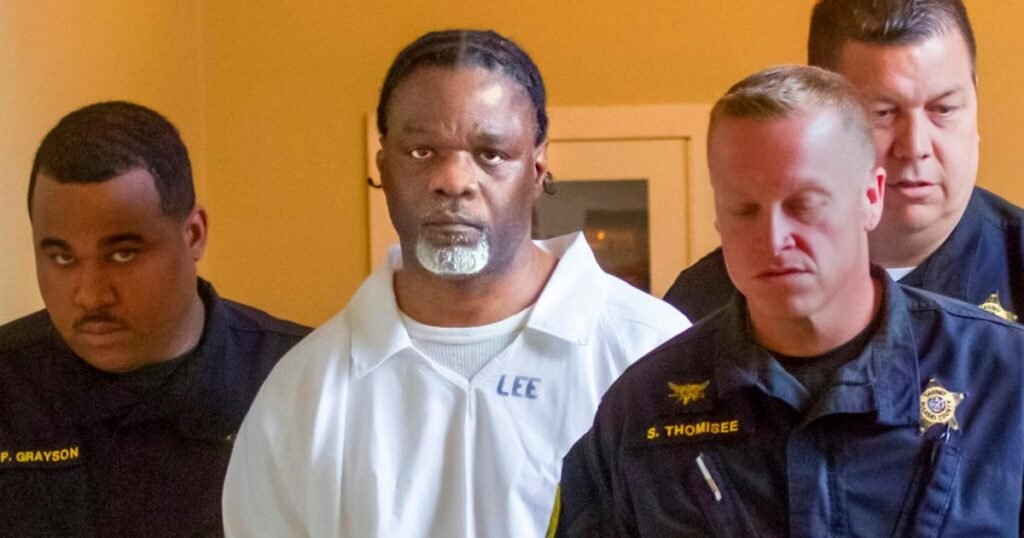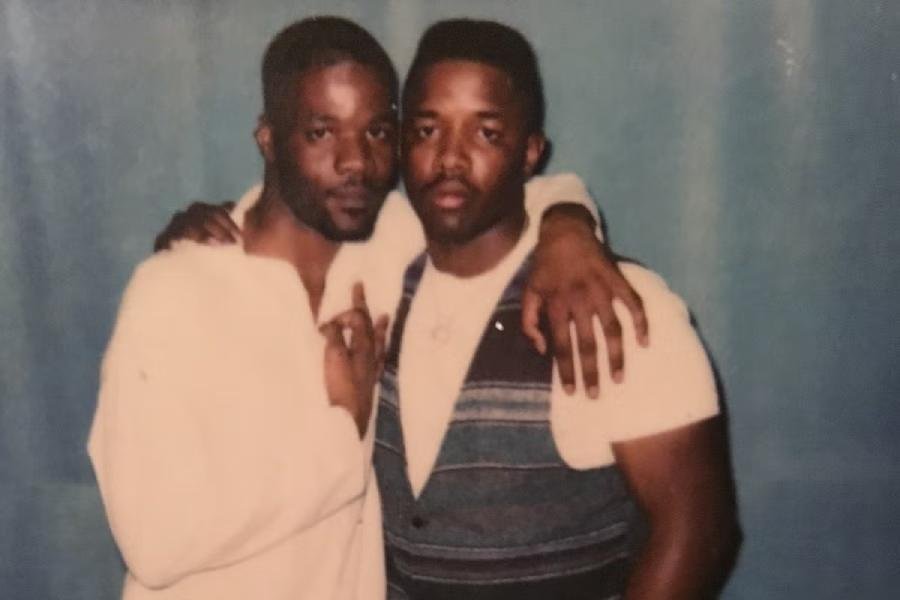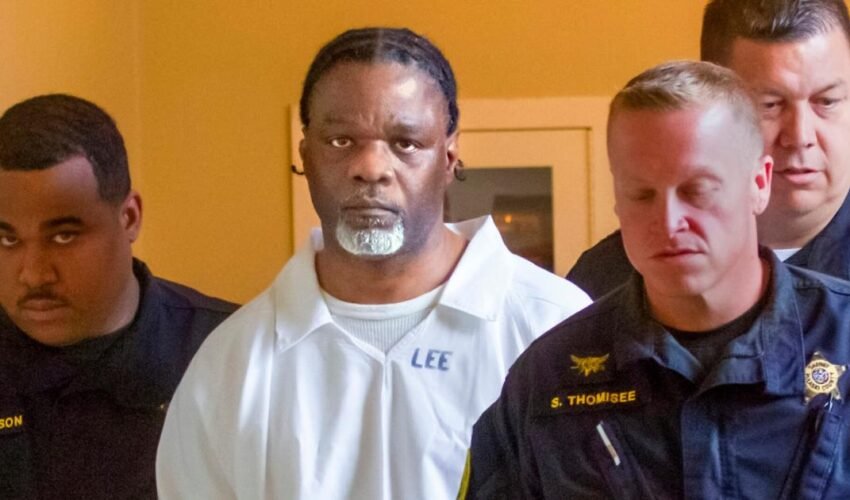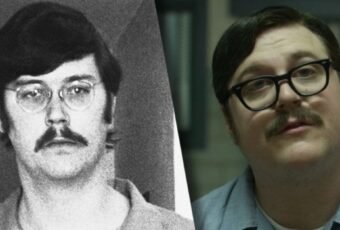On April 20, 2017, Arkansas executed Ledell Lee for the brutal murder of Debra Reese, despite his steadfast claims of innocence. Lee spent over 20 years on death row appealing his conviction and sentence. But it was not until 2019, two years after his execution, that the extent of a tragic injustice was revealed. New DNA testing showed genetic material from an unknown male present on the murder weapon used to beat Debra Reese to death.

However, this revelation came too late to prevent Arkansas from putting Ledell Lee to death. Examination of the questionable case against Lee, along with new exculpatory DNA results, paints a chilling portrait of a rush to execution at the expense of true justice.
A Flimsy Case Rushed to Execution
On April 20, 2017, the state of Arkansas strapped Ledell Lee to a gurney and injected him with a lethal cocktail of drugs, executing him for the 1993 murder of Debra Reese. “My dying words will always be, as it has been, ‘I am an innocent man,'” Lee stated just before his death. He had maintained his innocence since the day of his arrest in 1993. But despite vocal claims of injustice from Lee and worldwide outcry over Arkansas’ rush to execution, the state put him to death anyway.
Murder of Debra Reese – From the outset, the case against Ledell Lee was flawed and contradictory. On February 9, 1993, 26-year-old Debra Reese was found murdered in her home in Jacksonville, Arkansas. She had been brutally beaten and strangled. Her body was found in her bedroom, naked from the waist down. She had been struck approximately 36 times with a tire thumper, a tool used to check tire pressure. The walls, floor, and bed were covered in blood, making the crime scene extremely bloody. Reese’s face was crushed and she had been struck with such force that her blood splattered up onto the ceiling. It was a violent and shocking murder that warranted a swift investigation. But the evidence against Ledell Lee was sparse from the beginning.
Why was Ledell Lee arrested?
Ledell Lee lived in the same area as Debra Reese in Jacksonville, Arkansas and was known as a familiar face in the neighbourhood. But he had no direct connection to Reese herself. Lee was arrested less than two hours after Reese’s body was discovered, but not because of any immediate evidence tying him to the crime. A tip from a local resident led police to Lee’s home where he was picked up miles away from the crime scene. Witnesses reported seeing a black male near Reese’s home around the time of the murder, leading to Lee becoming a suspect. However, he was not found with any physical evidence linking him to the bloody murder. The only evidence against him was unreliable eyewitness testimony placing him near the victim’s home. Despite the lack of direct evidence, Lee had no verifiable alibi and was tried and convicted of Debra Reese’s murder on sparse circumstantial evidence.

Lee’s first trial in 1994 resulted in a hung jury, suggesting the evidence was far from conclusive. But in 1995, Lee was convicted and sentenced to death. From that point forward, he received inadequate legal counsel. His lawyers failed to call alibi witnesses who could have placed Lee elsewhere during the murder. They also missed glaring contradictions in the prosecution’s forensic evidence.
When appeals to prove his innocence failed, Lee faced execution in 2017. Arkansas had a supply of lethal injection drugs set to expire at the end of April and no source to replenish it due to an ongoing shortage. In response, the state made plans to execute eight inmates in just 11 days before the drugs expired. Despite clear warnings that such a rushed schedule increased the odds of error, Arkansas refused to slow down.
Ledell Lee’s April 20 execution date left little time for his defence team to petition for DNA testing of evidence from the crime scene. His attorneys rushed to file last-minute appeals, but courts denied the request to test DNA, absurdly ruling Lee “delayed too long” despite his years of appeals. Arkansas was determined to meet its execution deadline, even if it denied Lee the chance to prove his innocence.
New DNA Evidence Points to a Different Killer
In January 2022, attorneys from the ACLU and Innocence Project were finally able to conduct DNA testing on key evidence from Lee’s case, including the murder weapon. Using technology unavailable at the time of trial, DNA from an unknown male was detected on the murder weapon. The same DNA profile was found on a shirt wrapped around the weapon. This provides concrete proof that someone else was involved in Debra Reese’s murder.
This striking DNA evidence contradicts the state’s forensic testimony used against Lee at trial. Prosecutors claimed Lee’s shoeprint matched a bloody print found on the victim’s face. However, the new DNA testing reveals the actual murder weapon – a wooden club found at the scene – does not bear Lee’s DNA. This strongly suggests Lee never touched the club that killed Reese.
Prior to his execution date, Lee’s lawyers actively fought to have this DNA evidence tested. But Arkansas courts denied each request, ensuring Lee would be executed before determining if he was actually innocent. The rushed executions of eight inmates in 11 days likely led Arkansas to execute Ledell Lee, an innocent man. With more time, the DNA evidence could have prevented this tragic outcome.
Advanced DNA Testing Methods Provide New Hope
The recent DNA testing that uncovered genetic material from an unknown male on the murder weapon used technology unavailable at the time of Lee’s trial in the 1990s. The initial testing used PCR-STR technology to generate a DNA profile from trace amounts of DNA on the evidence. This profile was entered into the national CODIS database of convicted offenders but returned no match. However, the profile remains in CODIS and will be continually compared to new entries as technology improves. Additionally, the mitochondrial DNA testing used on hairs found at the crime scene can now exclude individuals from maternal lineages more definitively than in the past. While the DNA results are not absolutely conclusive, the use of advanced technologies not previously available provides compelling new evidence that demands re-examination of Lee’s conviction. At the very least, it tragically illustrates how an execution eliminates the opportunity for new evidence to come to light later when science catches up.
Lingering Questions Demand Deeper Investigation
While the recent DNA testing does not conclusively exonerate Lee, it raises extremely troubling doubts about his already questionable conviction. Arkansas officials insist Lee was properly convicted and executed, despite DNA proof that someone else handled the murder weapon. It seems Arkansas is determined to ignore any evidence that would expose its rush to execution. But true justice requires fully examining cases where executions may have claimed innocent lives.
In the years since Lee’s execution, his attorneys and family have uncovered additional evidence suggesting his innocence. Fingerprints taken from the crime scene do not match Lee. In 2021, his fingerprints were run through national databases but again returned no matches. Fingerprints from the actual killer could still be tested against the mystery male DNA from the murder weapon. Identifying the person linked to that DNA profile would provide answers in Debra Reese’s murder case.
Additionally, witnesses who testified against Lee have since recanted their testimony. Key eyewitnesses that placed Lee at the scene now say they are unsure of the identification. The validity of their original testimony is questionable at best. All of this new information reinforces the considerable evidence that Ledell Lee did not receive a fair trial or appeals process.
Most importantly, when potentially innocent people are executed, the real killers remain free. The new DNA evidence in Lee’s case likely belongs to the actual murderer who took Debra Reese’s life in 1993 and escaped punishment. But with Lee tried, convicted and executed, no further investigation unfolded. Seeking true justice for victims like Reese means re-examining potential mistakes that allow killers to walk free.
An Appeal for Truth: Re-Examining Capital Convictions
The deeply troubling case of Ledell Lee illuminates why capital punishment should have no place in an imperfect justice system. It is unacceptable that likely innocent people have been executed when significant doubt remains. The emergence of new DNA evidence years after conviction is not uncommon, but a rushed execution eliminates the opportunity to correct mistakes.
America takes pride in the presumed integrity of its justice system. But that system is implemented by flawed human beings, not infallible machines. Even the best jurists and prosecutors can make mistakes. When the penalty is death, there is no recourse for errors. Calls are growing to re-examine questionable capital convictions where doubtful guilt remains.
The disturbing case of Ledell Lee shows why capital punishment cannot continue in its current form. If America retains the death penalty, greater precautions must be implemented to prevent wrongful executions. Abolishing executions in favour of life imprisonment would avoid this moral crisis entirely. But at the very least, we must learn from cases like Lee’s to make policy changes that restore confidence and trust in the justice system. The time has come for a thoughtful re-evaluation of how capital punishment is applied. The life of an innocent person depends on it.
Now that you’ve read about the injustice to Ledell Lee, read a similar case where injustice was served to a 14-year-old George Stinney.











Leave a comment